Cycling on tarmac roads in summer is all very well but you can learn a whole lot about geology - and the laws of physics - if you ride off-road. For example: today I went for a ride along a little-known trail and discovered a great deal about the adhesive properties of clay, the non-adhesive properties of tires clogged with wet clay and the super-adhesive and abrasive properties of brake pads clogged with dry clay.
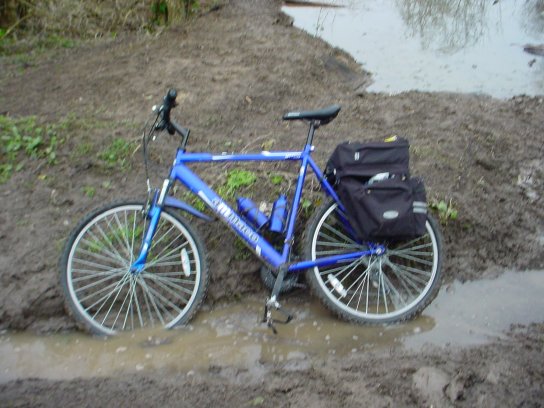
A lot of mud and a bike - bliss!
An aside
In my first article on velocipedological science: Cycling for Science #1 - Tensegrity, I spoke of the spoke. The spoked wheel, aka wire wheel was invented in 1808 by Sir George Cayley
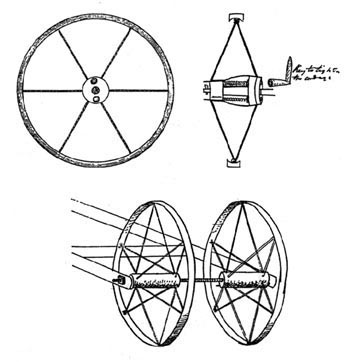
Sir George Cayley's wire wheel design.
Image courtesy Monash University
It is notable that this, the first ever spoked wheel has 12 spokes in 6 pairs. It is notable because Cayley's design uses the least possible number of spokes for a tensegrity wheel, a number later calculated from first principles by Buckminster Fuller. As i noted in a comment to my previous article, it was Buckminster Fuller himself who first observed that the wire wheel is a tensegrity structure: see http://www.rwgrayprojects.com/rbfnotes/fpapers/tensegrity/tenseg01.html
For all its strength and rigidity the spoked wheel has its weaknesses, primarily in the part of the spoke which sits in the flange of the hub. That is where spokes usually break if riders insist on bouncing their bikes over rough terrain - and I sure do. After all, a dirt trail through awesome scenery is a happy trail, even if things do break from time to time. Which reminds me that I must do an article on the velocipedological aspects of mineralized osseous tissue.
The geology of Kent
In my locality the surface rock is mostly chalk overlaid with soil. There are also beds of London clay to the north and of Gault to the south. Where the rain washes the soil downslope there is good old-fashioned mud, being soil and water with an admixture of chalk, flint, organic matter and, these days, plastic. Where clay, chalk, flint and topsoil is washed downslope there are layers or pockets of colluvium. For further details of the geology of Kent I recommend the Kent Geologist's Group's Synopsis of Kent's Geology.
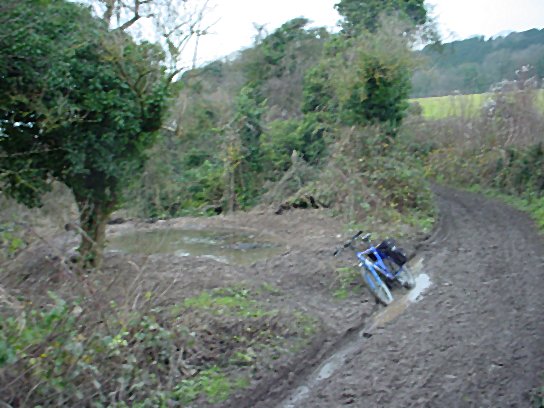
Mud, mud, glorious mud, pace Flanders and Swann.
By whatever geological name, mud which consists mainly of clay is very sticky. It bonds rather well to any tire with a prominent tread and eventually cakes up around the brakes and forks, bringing the wheel to a dead stop. Fortunately, in woodlands there is no shortage of sticks with which to poke out the mud. There is no need to carry mud sticks, and mud sticks as many a politician has learned to his cost. There is no cure, but one very simple palliative measure is to cycle through, rather than around, every puddle you come across. This is, of course, no help at all to politicians but the cyclist knows that clay does not stick well to wet tires and wet metal. If only the same could be said of wet fabrics!
An act of wanton vandalism.
Along the trail through the edge of Westfield Wood there were two most wonderful wood sculptures waiting to surprise and delight the happy wanderer. I say "were" because there is now only one. The carving of a young deer has gone and only the tree stump remains.
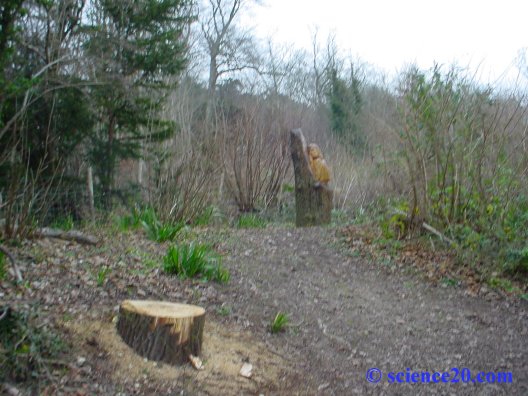
An act of vandalism
I assume that this is vandalism because a high quality wood sculpture has disappeared from an area under the stewardship of Kent County Council, Kent Wildlife Trust and others in the same time-frame as the (deliberate or accidental?) damage to a vehicle barrier at the northern end of the trail.
The high quality of workmanship and undoubted talent can be seen from these images of the remaining wood sculpture.
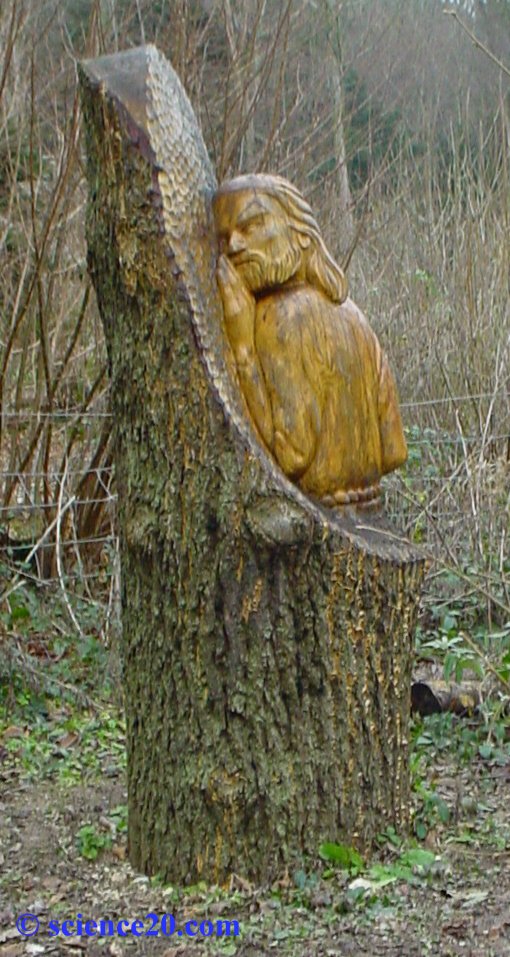
Left view of Westfield Wood sculpture
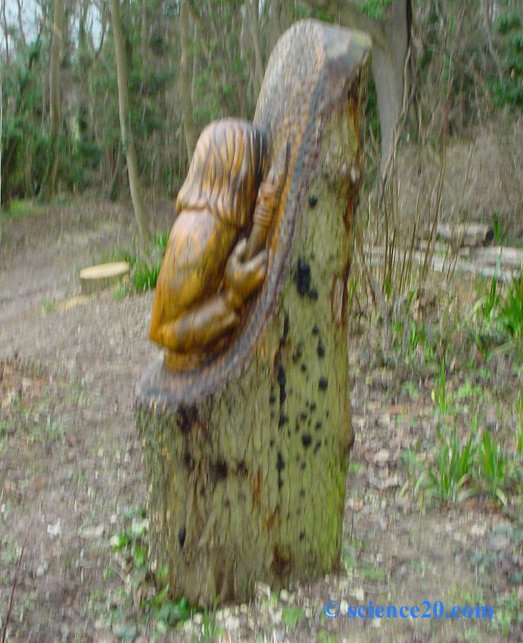
Right view of Westfield Wood sculpture
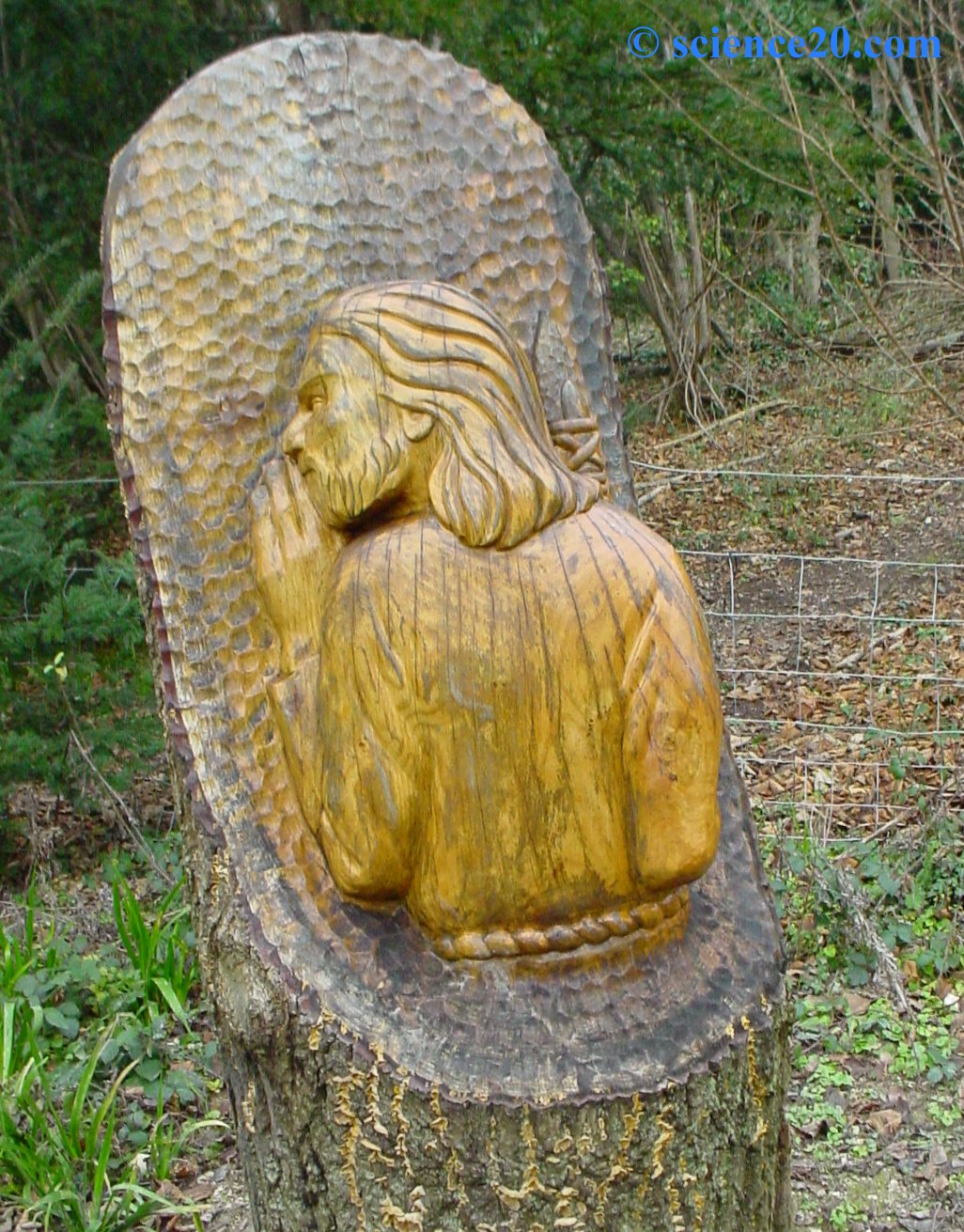
Front view of Westfield Wood sculpture
Westfield Wood lies next to Boxley Warren and is an Area of Outstanding Beauty (AONB), a Site of Special Scientific Interest (SSSI) and a Special Area of Conservation (SAC). It is just one of very many such places which I am privileged to enjoy by virtue of being a man of Kent.
After slogging uphill over flinty tracks and through mud it is a joy to take a coffee break.
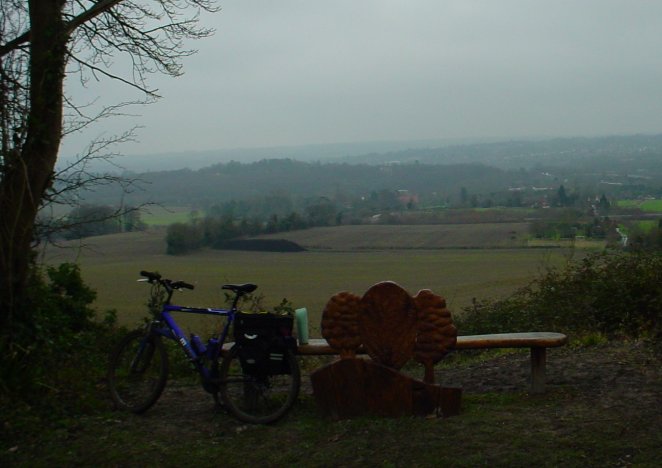
Coffee break
I offer a vote of thanks to the person or persons who carved the bench seat - it offers a spectacular panoramic view.
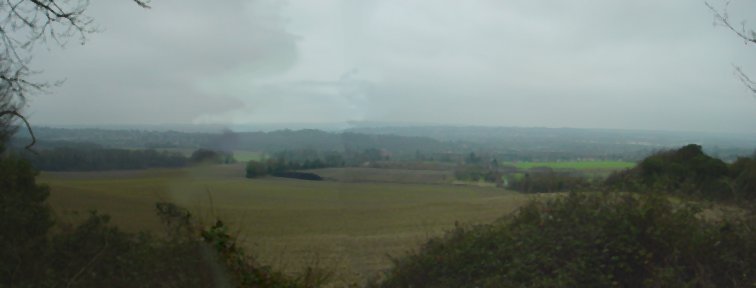
View from the bench
Recommended reading
Boxley Warren - this free pdf contains much of interest to the botanist, geologist and historian.
.




Comments